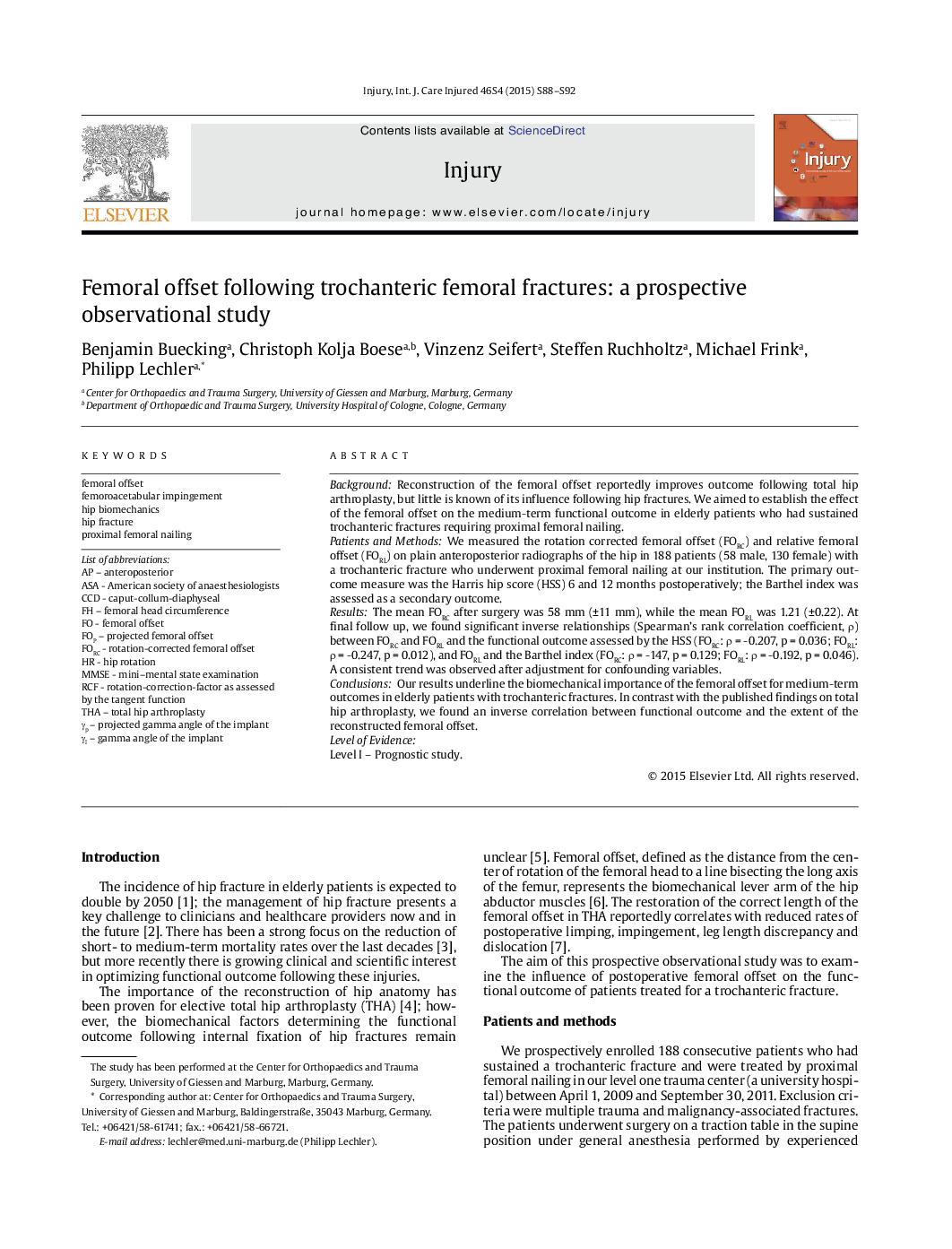| Article ID | Journal | Published Year | Pages | File Type |
|---|---|---|---|---|
| 3239357 | Injury | 2015 | 5 Pages |
BackgroundReconstruction of the femoral offset reportedly improves outcome following total hip arthroplasty, but little is known of its influence following hip fractures. We aimed to establish the effect of the femoral offset on the medium-term functional outcome in elderly patients who had sustained trochanteric fractures requiring proximal femoral nailing.Patients and MethodsWe measured the rotation corrected femoral offset (FORC) and relative femoral offset (FORL) on plain anteroposterior radiographs of the hip in 188 patients (58 male, 130 female) with a trochanteric fracture who underwent proximal femoral nailing at our institution. The primary outcome measure was the Harris hip score (HSS) 6 and 12 months postoperatively; the Barthel index was assessed as a secondary outcome.ResultsThe mean FORC after surgery was 58 mm (±11 mm), while the mean FORL was 1.21 (±0.22). At final follow up, we found significant inverse relationships (Spearman's rank correlation coefficient, ρ) between FORC and FORL and the functional outcome assessed by the HSS (FORC: ρ = −0.207, p = 0.036; FORL: ρ = −0.247, p = 0.012), and FORL and the Barthel index (FORC: ρ = −147, p = 0.129; FORL: ρ = −0.192, p = 0.046). A consistent trend was observed after adjustment for confounding variables.ConclusionsOur results underline the biomechanical importance of the femoral offset for medium-term outcomes in elderly patients with trochanteric fractures. In contrast with the published findings on total hip arthroplasty, we found an inverse correlation between functional outcome and the extent of the reconstructed femoral offset.Level of EvidenceLevel I – Prognostic study.
